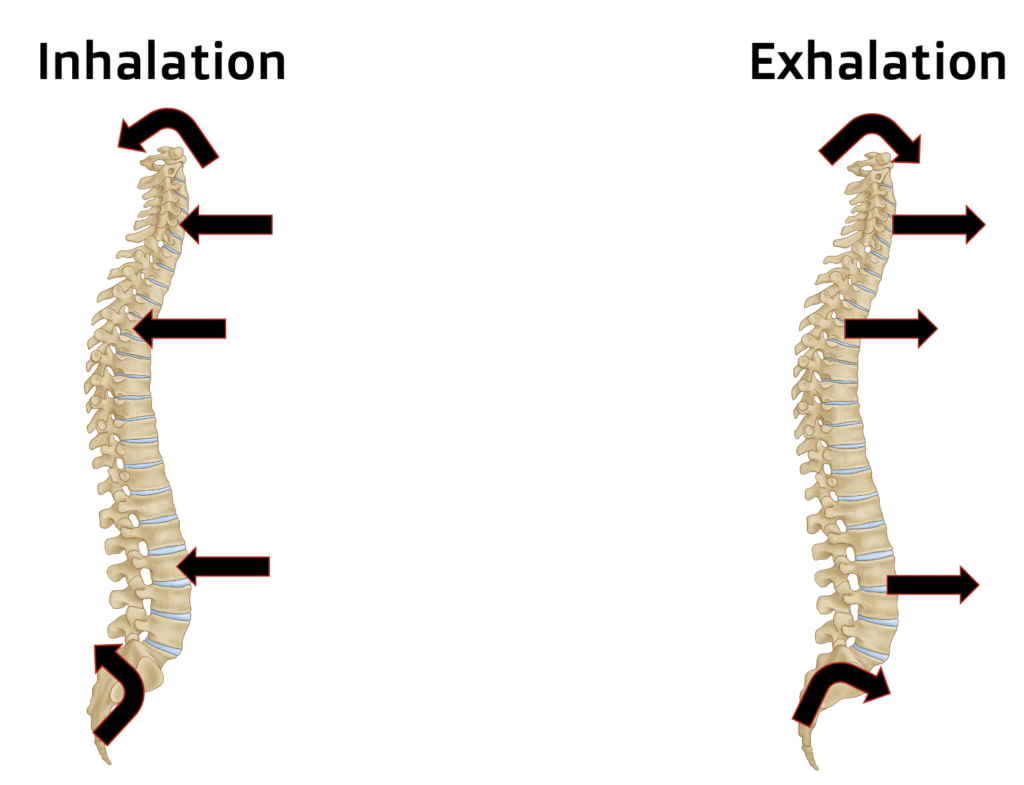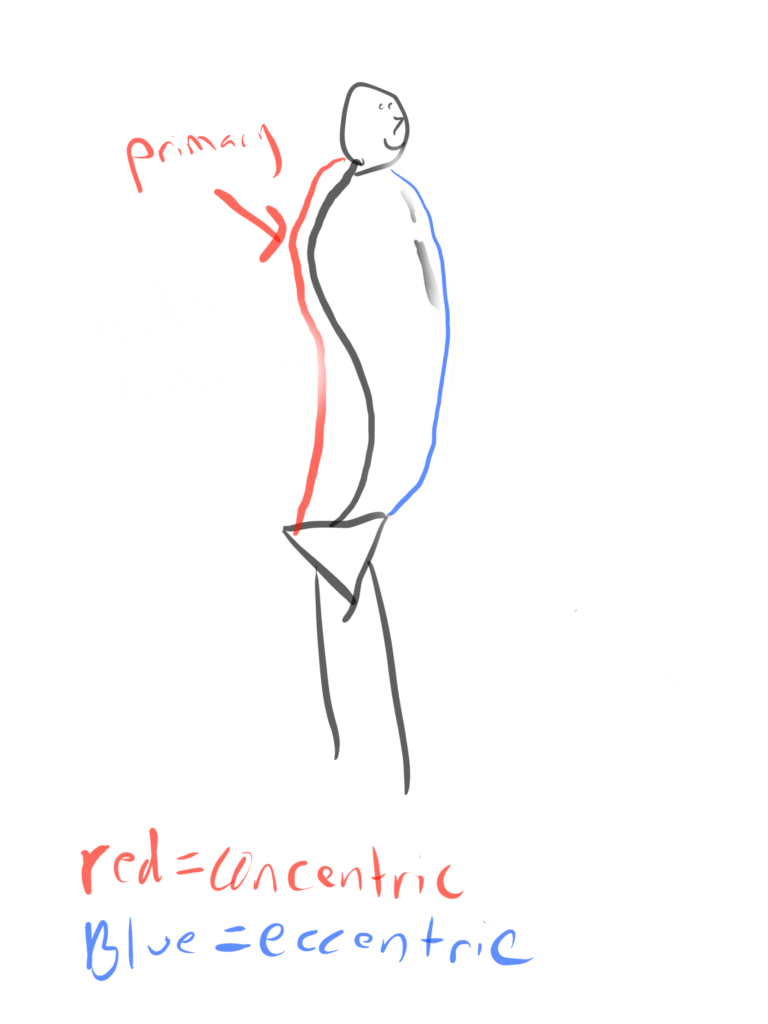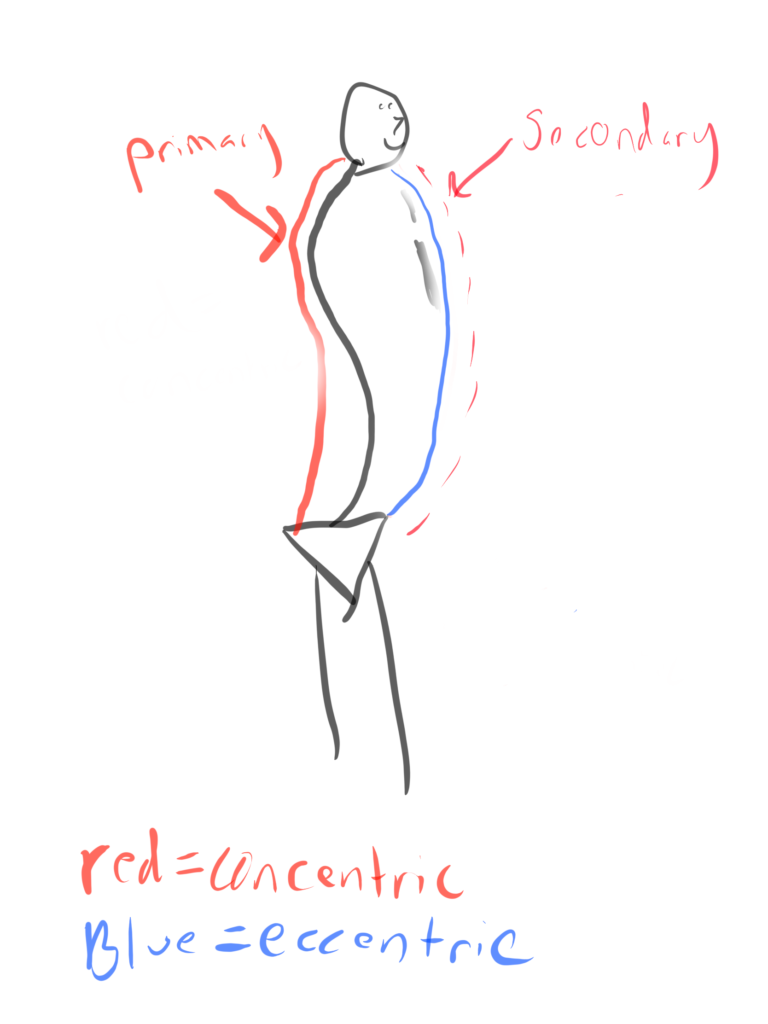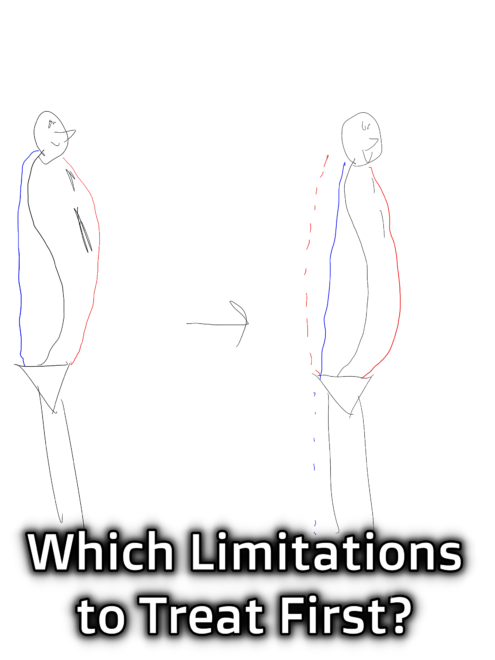Table of Contents
Improve your exercise selection by learning what limitations to prioritize
So you have all these limitations you’ve found. You may inevitably ask yourself:
Uhh…where do I start, fam!?!?
While you can get results with just about anything, prioritizing certain aspects over others can enhance your success rate.
If you hit the right dominos, you can knock down the entire stack (and talk to Zac).
But how do you know what is important and what is not? That’s what we will dive into in this debrief.
If you want to reduce the overwhelm of your assessment findings, and better categorize your supreme clientele, then you gotta check out Movement Debrief Episode 133.
Watch the video below for your viewing pleasure, or listen to the podcast if you can’t stand the sight of me 🙁
and the audio version:
If you want to watch these live, add me on Instagram.

 t
tShow notes
Check out Human Matrix promo video below:
Below are some testimonials for the class:
Want to sign up? Click on the following locations below:
November 7th-8th, Charlotte, NC (Early bird ends October 11th at 11:55pm!)
February 20th-21st, 2021, Atlanta, GA (Early bird ends January 17th at 11:55 pm!)
April 10th-11th, 2021, Warren, OH (Early bird ends March 14th at 11:55 pm)
May 1st-2nd, 2021, Minneapolis, MN (Early bird ends April 4th at 11:55pm!)
May 29th-30th, 2021 Boston, MA (Early bird ends April 25th at 11:55pm!)
August 14th-15th, 2021, Ann Arbor, MI (Early bird ends July 18th at 11:55pm!)
September 25th-26th, 2021, Wyckoff, NJ (Early bird ends August 22nd at 11:55pm)
Dickinson College in Carlisle PA (POSTPONED DUE TO COVID-19) [Approved for 14 Category A CEUs for athletic trainers]
Montreal, Canada (POSTPONED DUE TO COVID-19) [6 CEUs approved for Athletic Therapists by CATA!]
Or check out this little teaser for Human Matrix home study. Best part is if you attend the live course you’ll get this bad boy for free! (Release date not known yet 🙁
Here is a signup for my newsletter to get nearly 5 hours and 50 pages of content, access to my free breathing and body mechanics course, a free acute:chronic workload calculator, basketball conditioning program, podcasts, and weekend learning goodies:
[yikes-mailchimp form=”1″ submit=”Get learning goodies and more”]
Biomechanics of the thorax – research evidence and clinical expertise – A great article outlining basic movements within the thorax
Action of the diaphragm on the ribcage – This article outlines how the diaphragm pull changes as it goes through full excursion.
The torso integration hypothesis revisited in Homo sapiens: Contributions to the understanding of hominin body shape evolution – This article looks at how we differ from one another in both ribcage and pelvic structure.
Body Mechanics in Health and Disease – This book has some cool graphics on the different body archetypes. You’ll see some dope ribcages
In Vivo Observation of Articular Surface Contact in Knee Joints – Bones don’t touch #EBP #watchugondoboutit
Shoulder Flexion Troubleshooting – In this debrief, we dive into scapulohumeral rhythm and more.
Inhaled vs. exhaled spines
Question: Hey zac I am a little confused by this wording:
“An exhalation-biased spine compensates with an inhaled (wide) ISA.”
If they are in an exhaled state wouldn’t that mean the ISA would present narrow? Thanks!
Answer: Inhalation and exhalation strategies are a reference to normal respiratory mechanics as the reference guide. You have to know these first to really be effective with this nomenclature.
Because you NEVER EVER EVER see people exhibit normal respiratory mechanics, I’ve moved away from talking this way.
But don’t worry, fam. I’ll iron this out for you 🙂
When discussing compensatory mechanics, we are using axial skeleton position as our initial reference point. So you have to know what the inhaled and exhaled spinal positions are.
To keep it ridiculously simple:
Inhaled spine = Spinal curves are pushed backward
Exhaled spine = spinal curves are pushed forward

If someone has reduced movement options, they may not be able to move the spine so well in the opposite direction. One can have an inhale-biased spine and may hella suck at exhaling the spine. The reason for this bias is likely due to anthropometrics and genetics.
The problem: you still have to complete the respiratory cycle!
An easy way to compensate is at the lower ribcage. These ribs are more flexible due to lacking a sternal attachment. This is where we get all hot and bothered by infrasternal angles (ISA)!
Someone with an inhaled spine will have an exhaled lower ribcage (narrow ISA), and one with an exhaled spine will have an inhaled lower ribcage (wide ISA).
You wouldn’t have matching inhaled and exhaled positions at the spine and ribcage unless we are exhibiting full respiratory movement options, which NO ONE does. Why? Your guess is as good as mine!
Can cranial issues limit movement?
Question: Can you help a person having jaw and visual issues causing movement limitations?
Answer: Though cervicocranial influences—occlusion, upper airway, vision, etc—can most certainly impact movement restrictions, the frequency at which someone needs to go down these paths to get changes is overstated.
The overwhelming majority of people lack mastery of movement basics: aka the stack.
If you cannot get the stack, squat, shift, reach, all of these things anyone ought to be able to do, then don’t even consider working with a dentist or optometrist to improve you movement. Especially considering the current lack of research supporting efficacy in these treatments (not to say that they don’t work, but there are hit or miss results).
The human body is INCREDIBLY adaptable, and many can get decent changes despite visual and dental influences.
Caveat: if you have upper airway or visual pathology, then I recommend pursuing these routes, but not to improve your movement.
For example, if you have sleep apnea or bruxism, you should find a good dentist to improve health in those areas. If you have a lazy eye or botched LASIK surgery, vision therapy could be quite impactful.
Prioritize the interventions best suited for the problem, the low hanging fruits. If you did that well (and trust me, you didn’t), then go into addressing other possible influences.
Should I address the right or left side first?
Question: We usually focus on helping clients shift into their right side since they are buried into their right side. I’ve heard that sometimes, but you need to integrate right side before left. What does that mean?
Answer: First off, be careful with what language you use to discuss what is going on with someone. If you tell them they are buried, that may encourage maladaptive beliefs about their bodies. No fun, and WAY more likely to have poor outcomes.
But on the real, prioritizing left vs right side misses one things that’s extremely important:
The stack.
There are several reasons why I prioritize the stack first before trying all types of wild and crazy single arm, single leg, shift this, twist that, go right then left then right exercises:
- Bilateral movements are easier to teach and learn compared to unilateral moves
- Although there is a unilateral restricted pattern, most people have restrictions bilaterally and have unique limitations that require unique solutions
- Unilateral movements require greater movement excursion and make one more prone to compensation because of difficulty
Think less formulaic of right first then left, and utilize testing, critical thinking, and expert coaching to get the outcome that your supreme clientele deserve.
Primary and secondary compensations
Question: I frequently see you referring to primary and secondary compensations. I must have missed the day at university where they defined these.
Any chance you could define them in one of your videos? I’m not having luck finding definitions elsewhere.
Answer: Let’s provide the definition better than that Blackstar song (which is a tall order):
- Primary compensation: A restriction that counteracts structural bias to stay upright
- Secondary compensation: A restriction that counteracts the primary compensation to stay upright
Let’s look at a wide ISA for example. If you remember from our exhaled spine discussion from above (you read that, right?!?!), a wide ISA’s structural bias would tend to the spine falling forward. Think the sacrum nutating “causing” a forward fall.
You don’t want to fall forward. You’ll totally have a bad time. To counteract these forces, a wide may concentrically bias posterior musculature to maintain an upright posture. This would be the primary compensation.

How would you know if you were dealing with a primary compensation? Remember the following heuristic:
- Concentric backside: Decreased flexion, abduction, and external rotation
- Concentric frontside: Decrease extension, adduction, and internal rotation
So in the case of a wide ISA with a primary compensation, you’d have the following findings:
- Decreased flexion, abduction, and external rotation measures
- Normal extension, adduction, and internal rotation measures
Now suppose that the primary compensation for this wide overcorrects, and this person starts to fall backward. SNAP! Now what do we do?
This problem is where secondary compensations are useful. This bias counteracts the forces the primary compensation induces on the body. In the case of the wide ISA, the secondary compensation would involve concentrically biasing the frontside of their body.

For this person, you’d likely have restrictions (and in some cases, hypermobility) in all planes.
Flip flop all of the above for a narrow ISA, and then you’ll have an idea of the differences between primary and secondary compensations.
Infrasternal angles and compensation order
Question: So treatment for wide ISA with only primary compensations and narrow with 2º compensations are very similar. And treatment for narrow ISA with only primary compensations and wide with 2º compensations are also very similar.
So to determine treatment options, is it almost more important to just see if that person is more concentric on the front side or backside since the ISA is not that relevant when the person has 2º compensations?
Answer: Although peeps can develop restrictions in similar areas, that doesn’t mean that you need to ignore their body structure and the compensatory order. These areas still matter when it comes to intervention selection.
The big reason is because of what “causes” the restriction.
Let’s take the case of someone who has a concentric bias of the anterior thorax (aka a down pump handle).
Both a narrow and wide can present with this, but each has a different way of achieving this restriction:
- Narrow ISA: anterior concentric thorax is a primary compensation
- Wide ISA: anterior concentric thorax is a secondary compensation
So the reason the narrow has this limitation has to do with the ventral cavity structure, wheras the wide has this limitation to mitigate a posterior concentric bias.
Though both archetypes need air in the front, we have to respect the structural differences between the two.
To improve this restriction in the narrow ISA, I need to make that person’s ventral cavity structure dynamic AF. Meaning, I need to expand the ventral cavity laterally. Choosing a move which “squishes” the body front to back can be useful in that regard. A great example of this would be a lazy bear exercise:
Whereas with the wide, the anterior restriction occurs to counteract the posterior restriction. I do not want to choose an activity that squishes the body front to back. That would potentially reinforce the limitations caused by structural bias.
If I choose the lazy bear for my wide, the scapular external rotation occurring from the 90-degree reach would further concentrically bias the backside of the body, which the wide already has. This is why a lot of times your clients who have a flat upper back struggle feeling ANY posterior expansion. You are robbing Peter to pay Paul, and I hear they’re both jerks anyways!
You can see how ignoring the structure may not get you your desired outcome.
What would be a better choice would be something that involves a 120-degree reach. You get less posterior compression reaching in this direction, and the upward rotation will give serratus anterior leverage to compress the lateral ribcage. You’ll still drive air forward AND you are helping make the wide structure more dynamic:
Does that mean if you give a narrow ISA an overhead reach you’ll kill them?!? No (except that one time). But you may not give your client the activity with the best odds of success.
Put some respek on the structure, and prioritize well.
Addressing multiple limitations at once
Question: If a narrow ISA has external and internal rotation limitations you say to address the external rotation limitation first. What happens if you address both at the same time?
Answer: Killing multiple movement restriction birds with one stone is totally effective and encouraged (especially because birds scare me, I’ll tell you the story one day).
The easiest way to make this happen is by encouraging some type of rotation in your peeps. When I rotate, I drive relative external rotation on one side, and internal rotation on the other. It’s great for those who have anteroposterior restrictions.
You can easily achieve this with a single-arm reach:
or if you are feeling frisky, a hip shift:
Caveat: Make sure your clients have the stack first!
Wide infrasternal angle breathing strategy
Question: What cues would you use for wide ISA breathwork?
Answer: The goal with exhalation for wides is to close the infrasternal angle. Make it smaller. So the #majorkey is to use pursed lips AND breathe slowly. This action increases resistance enough to recruit external obliques to close the lower ribcage.
Some of my favorite cues to give are:
- Flicker birthday candles
- Do an impression of a windy day
- You are the big bad wolf, blow the house down
Sum up
- Inhaled and exhalation nomenclature use the spine as a reference point. The lower ribcage compensates when there is a loss of spinal respiratory dynamics.
- Cervicocranial influences can affect movement, but conservative measures should be pursued first barring pathology.
- Use testing to determine interventions, while emphasizing bilateral before unilateral exercises.
- Primary compensations occur to counteract structural bias, whereas secondary compensations occur to counteract primary compensations.
- One must consider both structure and compensatory order when selecting interventions.
- Both anterior and posterior restrictions can be simultaneously addressed with rotation.
- Wide infrasternal angle presentations benefit from slow, purse-lipped exhales.

